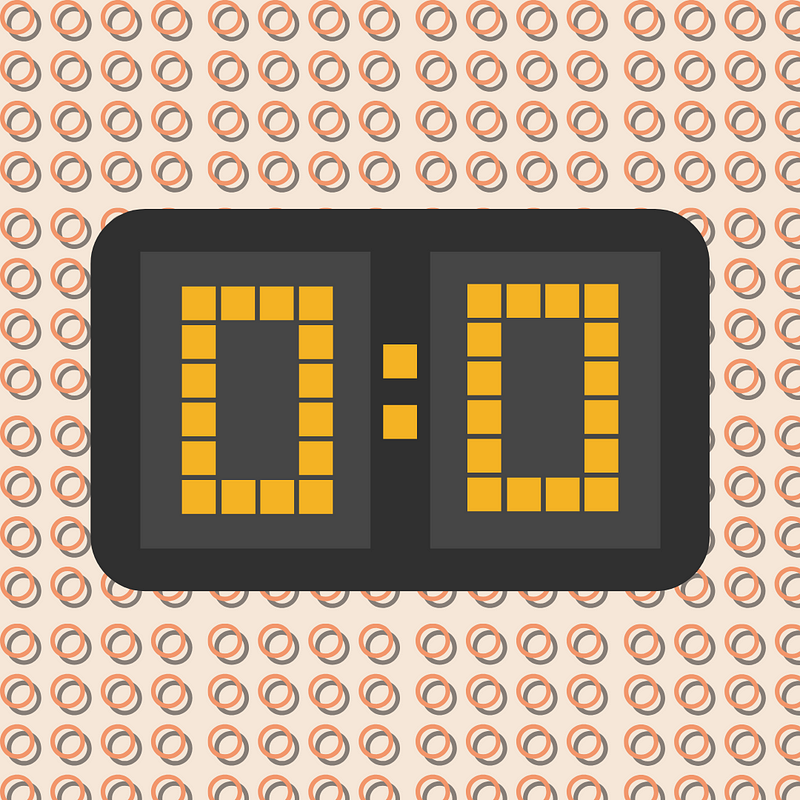Five Yards, Timeouts, & Rethinking Clock Management in the NFL
Is sacrificing a timeout to save five yards really a good idea in today’s NFL?

It is nearly impossible to watch a NFL game these days without hearing the word analytics mentioned a few times. It is likely brought up in situations where an offense has a decision to either go for it on fourth down or kick a field goal. The general concept of analytics is to use historical data as a baseline to give a team or player a competitive edge. Throughout sports we have seen this use of data to tell us that the three point shot is the most important shot in basketball and that strikeouts are not necessarily a bad thing in baseball. In football it has taught us that when presented with a fourth down with three yards or less to go once you pass midfield, go for the first down.
The adoption of numerical analysis has received the most pushback in the NFL, which makes sense when you consider how much of the game is often based on feel and intuition as much as it is about intellect. The term “situational football” gets thrown around a lot by pundits that are trying to make a point of knowing when to be aggressive and when to be conservative. To simply use the best judgment available as opposed to relying solely on numbers. And one of the most judgment-based decisions that coaches make in the NFL is when to use a timeout. They are an essential tool of time management in late game situations, but why is it that they are still often used to avoid a five yard penalty for delay of game or too many men on the field? It is time to accept a five yard loss here and there for the potential reward of winning a game when it matters the most.
Timeout Game Theory

The game of football is one that is filled with many stops. Unlike sports such as basketball and soccer, which feature a more free flowing pace of action, football is a game of 150 short bursts. Coaching football is an exercise in clock management at all times. Teams are often praised for long, sustained drives because they have the benefit of scoring points and taking away more opportunities for the other team to score. One of the most vital tools in a coaches time managing belt are timeouts. When making a late drive on offense or attempting to stop one on defense, having them at your disposal can be the difference between winning and losing a game.
In late game situations, coaches will typically rely on four opportunities to stop the clock: their three timeouts and the two minute warning. Having the timeouts available is incredibly important in a league that features a lot of close games. In 2023, 142 games were decided by eight points or less (which can be considered a one score game). That means that 52% of all NFL games were close games that came down to last minute execution in the fourth quarter. With this amount of games being decided in the waning moments, a team’s timeouts must be considered a precious asset by every head coach.
And yet, it is common for these precious timeouts to be used on moments that are not that significant throughout the course of a game. From 2018–2021, NFL coaches averaged 1.06 timeouts per game to avoid delay of game penalties on offense and 0.74 timeouts called to avoid too many men on the field penalties on defense. Together that accounts for 1.8 timeouts called for these types of plays, which equals 30% of allotted timeouts during the course of a game. The cost of these penalties? Five yards. Coaches, in their race to win every play, might be too close to the situation. It borders on illogical to be willing to sacrifice something as important as the ability to stop the clock in a close game in favor of five yards in the third quarter.
Five Yards

It is widely accepted that the NFL is an offensive-leaning league today. Yards are gained and points are scored at a pace that we have not seen before in the Super Bowl era. This past season, there were only seven teams that did not average a minimum of five yards per play. With that in mind, coaches being petrified by burning a timeout to save a loss of five yards seems to lack any sense of reason. The league average of yards per play among all teams is 5.25 yards, so teams have a very good chance to make up the yards that they lost if they are called for delay of game.
Football conventional wisdom preaches that losing those yards has the potential to be “drive killers”, that a long yardage situation could lose a game. If we look at 3rd down conversions as a measuring stick for this idea, it tells a slightly different story. Over the last 20 years, third and long yardage (seven yards or more) has remained around 40%. Basically, it is not as doom and gloom as many coaches will make it out to be. What is doom and gloom however, is watching an opponent run down the clock with running play after running play because the opposing team doesn’t have any timeouts remaining.
Football is a game that is constantly at odds between new methodology and what has always worked in the past. Teams were so focused on vertical passing and between the tackle rushes for years before they learned that getting the ball to your best athletes in space was a better way to move the ball. College and high school coaches had unlocked that secret decades ago but the NFL and its fraternity were too rigid to accept it until it was done by a small collection of coaches and coordinators. Such is the case for the boogeyman designation that delay of game penalties have been assigned. There will be a coach in the near future that proclaims that losing the five yards is irrelevant if it means keeping their timeout.
For all the critics of data-driven analytics in sports, its application in football helps to create a more exciting product. It is fun to watch teams go for it on fourth down, for example. But data in sports is supposed to show us a better way to execute and ultimately win games. A timeout is worth a lot more than just five yards when coaches look at the big picture of how to win a football game. Winning in the NFL is never easy, and games are usually close. Timeouts are one of the few tools that coaches have to keep the outcome in their teams hands. It is time that they stopped wasting that tool over five yards.
Enjoy reading sports content that goes beyond typical hot takes and highlights? Check out Deep Cover Sports for bi-weekly analysis of the sports world for free!
